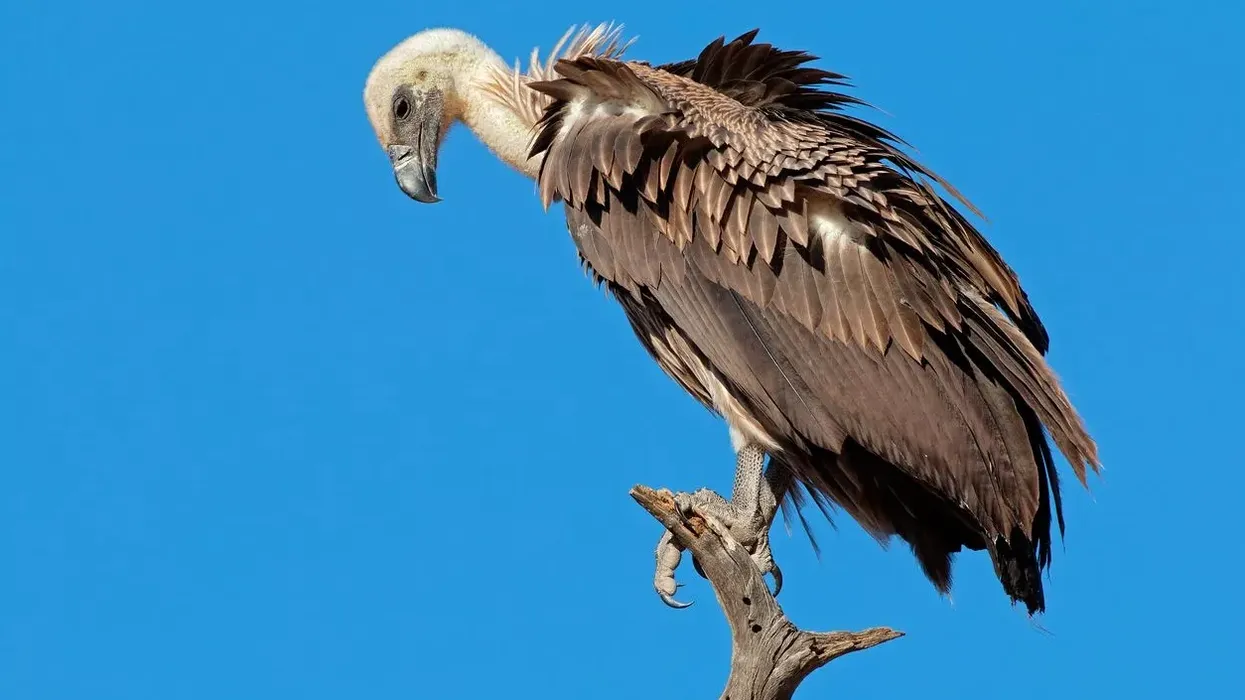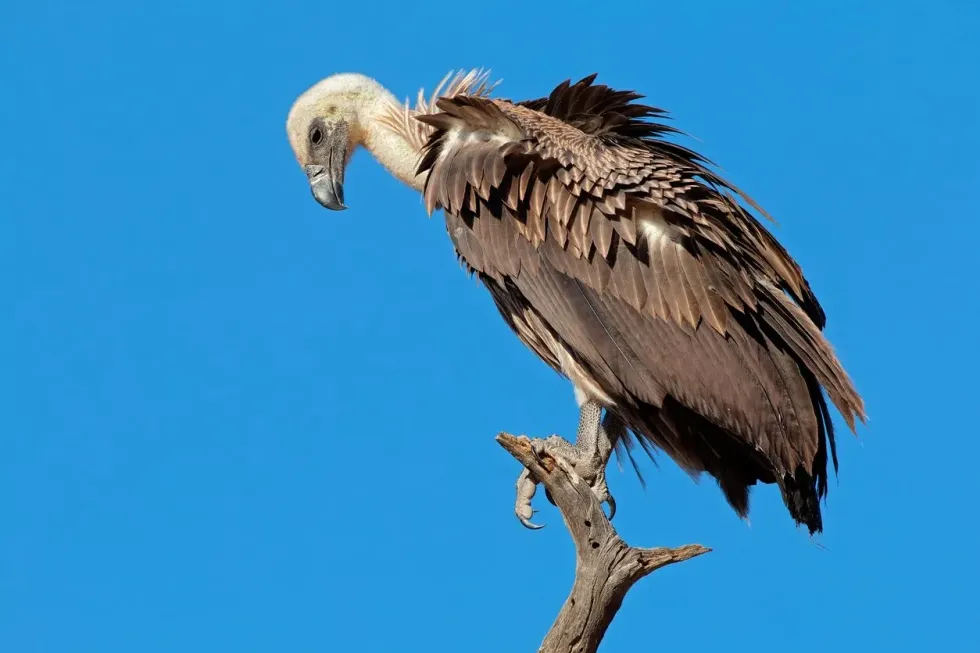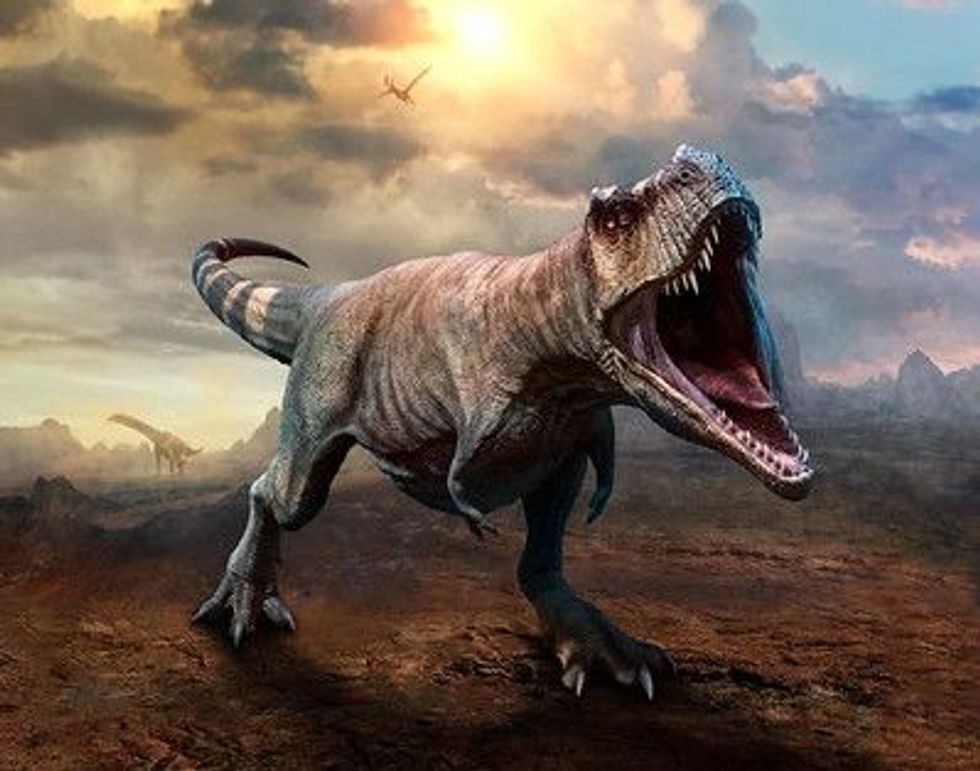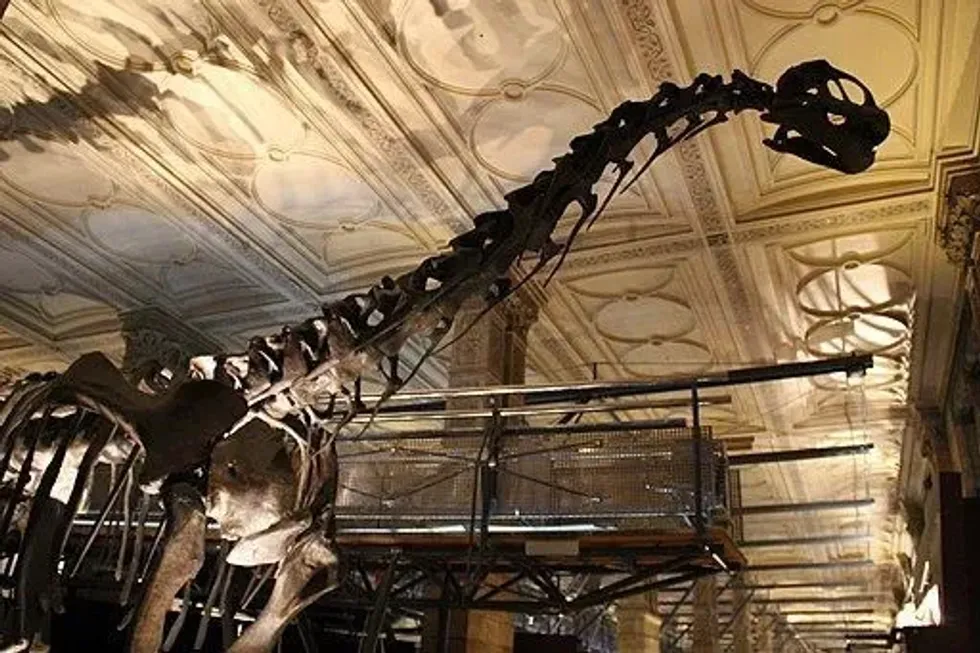Vultures are scavengers who eat dead and decaying bodies of other animals, which is known as carrion.
Vultures are separated into two groups, New World and Old World vultures. New World vultures, including the Andean Condor, are mostly found in the Americas and Caribbean, while the Old World vultures such as the Griffon vultures are found all around Europe, Asia, and Africa.
Vultures are social and feed, fly and roost together in large flocks. Vultures play an important and vital role in the food cycle by feeding on carrions as they prevent the spread of illnesses from old, rotting corpses. These birds have excellent senses of vision and smell to help them locate food from miles away.
Vultures have a hunched body with large wings, bare necks, and bare heads to protect them from parasites and bacterium that may burrow into their feathers while feeding on carcasses. They have extremely strong and corrosive stomach acid, which allows them to consume rotten flesh.
They have weak legs and blunt talons making it difficult for them to rip open some bigger animals, so they wait for other predators to tear the flesh before they feed. Although vultures are scavengers, they do occasionally hunt and eat live prey.
If you liked these true facts about vultures, then you'll surely like these facts about the bird of paradise and the barn owl too!
Vulture Interesting Facts
What type of animal is a Vulture?
Vultures are scavenging birds, as they feed off of carcasses of dead animals without the meat having an ill effect on them. The gut flora of vultures is dominated by bacteria from the carcass they eat as the bacterial breakdown of carrion tissues benefits them.
Vulture species are divided into two groups, the New World vultures and the Old World vultures. The new world vultures have an amazing sense of smell to help them find carcasses, whereas the old world vultures have great eyesight to help them find carcasses.
What class of animal does a Vulture belong to?
Vultures belong to the Aves class of animals. The Aves class consists solely of birds.
Birds are known to be warm-blooded vertebrates that are characterized by their feathers, laying of hard-shelled eggs, toothless beaked jaws, a four-chambered heart, and a lightweight yet strong skeleton.
How many Vultures are there in the world?
Due to the lack of an accurate number, an approximate count of the entire vulture bird population is hard to state.
Where does a Vulture live?
Vultures occur in many forms throughout a variety of species, meaning a plethora of vulture species can be found all across the world. These birds can be found in almost all kinds of habitats, ranging from wooded areas to semi-desert regions.
What is a Vulture's habitat?
Vultures are adaptive and can be found in a variety of habitats.
Different types of vulture can be found in different types of regions; for example, one of the most famous vulture species, the black vulture, can be found in forested and open areas. The Turkey vulture can be found in subtropical forests and deserts.
The Griffon vulture (gyps fulvus) can be found in shrubland and grasslands, and much like the name suggests, the Andean condor can be found in the Andes mountain ranges of South America.
Who do Vultures live with?
Vultures are social and often fly with their large wings and can often be found in a large flock. Almost all of the vulture species feed and prey in large flocks.
Any group of vultures is usually called a committee or a venue. In-flight, a group of vultures is called a kettle, and when they are feeding together at carcasses, they are called a Wake.
How long does a Vulture live?
Vulture lifespan ranges from 10 years to almost 50 years, depending on the species they belong to! The common black vulture has a lifespan of 10 years, and the king vulture can live as long as 30 years in captivity.
How do they reproduce?
Old World vultures are known to build large nests on cliffs or trees, sometimes in a large colony. They lay a single egg and incubate them for 38-39 days, and it may take two months to hatch.
The smaller New World vultures are known to build nests, and their eggs are found in natural cavities in cliffs or trees. They lay two eggs and then incubate them for just over 30 days.
What is their conservation status?
Presently, 14 out of the 23 vulture species all over the world are threatened with extinction, with the most rapid decline occurring in Asia and Africa.
The main reason for their population decline is variable, but mostly it is caused due to human persecution like the act of poaching and deliberate poisoning of carcasses to kill vultures; other hazards include road collisions by vehicles.
In Asia, gyps vultures have declined by 95% due to veterinary drugs.
In Africa, the decline in the vulture population is related to a lot of issues like poor conservation effort by the government, poaching, deliberate poisoning, and widespread use of harmful drugs in veterinary circles.
The California condor has been classified as Critically Endangered, with only 160 condors (part of the New World vultures) remaining in the wild as of 2020. The Andean condor is Near Threatened with just 6700 left in the wild.
Vulture Fun Facts
What do Vultures look like?

Vultures are large birds of prey, though most of them eat carcasses. They have a heavy body, with a hunched-over state, and have looser and many relaxed feathers in comparison to other birds. Some of the species have paler underparts, with bright red or deep blue heads or throats.
One of the basic characteristics of vultures is their bald head and droopy throats. The bald head is often termed to be helpful to them as it helps in regulating their body temperature.
Since vultures (New world vultures only) excrete waste onto their legs to keep themselves cool in warm weather, their legs always have a white coat which is due to the uric acid present in the excrement.
How cute are they?
With their bald head, hunched back, and droopy throats, it would be a tough call to call vultures cute! Vulture babies are wholesome and cute, though. The Egyptian vulture is one of the rare cases of a vulture that is good-looking and cute.
How do they communicate?
Most vultures have simple calls, such as barking sounds, hisses, and grunts which mainly serve as deterrents for predators. They also use visually communicate with other vultures.
The turkey vulture is one of the New World vulture species that is renowned to communicate visually with others of its kind.
Turkey vultures use this to locate prey, and the black vultures, another New World vulture, follow them to the prey to take part in the feeding activity.
How big is a Vulture?
The largest vulture, the black vulture, can grow up to 39.37 in (100 cm) long and has a wingspan of 106.29 in (270 cm).
How fast can a Vulture fly?
An accurate speed of vultures is hard to pinpoint as there haven't been extensive researches on the topic. But from what little knowledge we know have, a Turkey vulture can fly at a speed of 60 mph (96.56 kph) to avoid predators.
How much does a Vulture weigh?
The weight of vultures differs depending on the species or subspecies they belong to. The lowest weighing vulture is the turkey vulture that can weigh up to 3.30 lb (1.5 kg), and the heaviest vulture is the cinereous vulture or Eurasian black vulture that can weigh up to 30.85 lb (14 kg).
What are their male and female names of the species?
No specific name has been assigned to the male and females of these birds.
What would you call a baby Vulture?
A baby vulture is called a vulture chick.
Since vultures have weak legs and blunt talons, they are unable to carry prey to their nest. So they feed their chicks by regurgitating liquefied food until the chicks are two weeks old, and after that, they give them solid food. A chick will depend on its parents for food and care until they are eight months old.
What do they eat?
Due to their acidic stomach, vultures have a strong immunity to bacteria and have a more corrosive stomach than other animals or birds.
This strong acidic constitution of their stomach helps these scavengers to digest a rotting carcass with ease and protects them from harmful parasites and bacteria as the acid will kill the bacteria when breaking down the food—keeping vultures safe from illness.
While they are famous for eating dead animals, vultures are capable of preying on live animals, but since they have weak legs and can't carry their prey, they prefer to attack sick or wounded animals. This is common if food is scarce in the habitat or no carcass can be found nearby.
Are they dangerous?
No. Despite their intimidating stature, vultures are harmless. They don't attack humans and also lack the physical trait that could come off as a threat to us. Although they are carnivorous, they stick to feeding on the carcass of dead animals and will not instigate an attack.
Would they make a good pet?
No. A vulture cannot be kept as a personal pet, as it is illegal and also, taking care of them is no easy matter. These endangered birds can be found in wildlife centers where you can volunteer to take care of them.
Did you know...
Vultures are divided into the New World Vultures (the Caribbean and the Americas) and Old World Vultures (Asia, Europe, and Africa). Old World vultures are more in number, and even though they share the same name, they are not related to each other.
Vultures have a strong stomach that can help them easily handle rabies, anthrax, and the most harmful objects that are fatal in nature.
A group of vultures feeding on any carcass is called a wake!
Vulture fecal matter is free of bacteria, viruses, and fungi due to the strong stomach acids in the stomach, which helps them in feeding off dead animals.
The Eurasian griffon vulture has been known to be able to reach a resting heartbeat within 10 minutes following a long flight.
The Black Vulture is the largest in the New World Vultures.
The Vulture's survival techniques
Turkey vultures are known to dig holes in tree trunks to create nests, and these nests can drop down as much as 4.33 yd (13 ft) from the entrance to the ground.
When attacked or threatened by predators, vultures vomit to lighten themselves so they can escape more easily into flight. Vomiting also serves as a projectile weapon and a defense mechanism as it may deter predators from attacking them.
The symbolism of the Vulture
Vultures, because of their feeding habit of preying on dead animal carcasses, have been seen related to ominous actions in nature.
Even if this bird is related to death and other sinister ideas, the turkey vultures stand as a symbol for loyalty, cleansing, patience, and protection, to name a few.
Vultures also are seen as messengers between life and death and act as the bridge to the physical and spiritual world.
Here at Kidadl, we have carefully created lots of interesting family-friendly animal facts for everyone to discover! Learn more about some other birds, including the secretary bird or the barn owl.
You can even occupy yourself at home by drawing one of our Vulture coloring pages.









